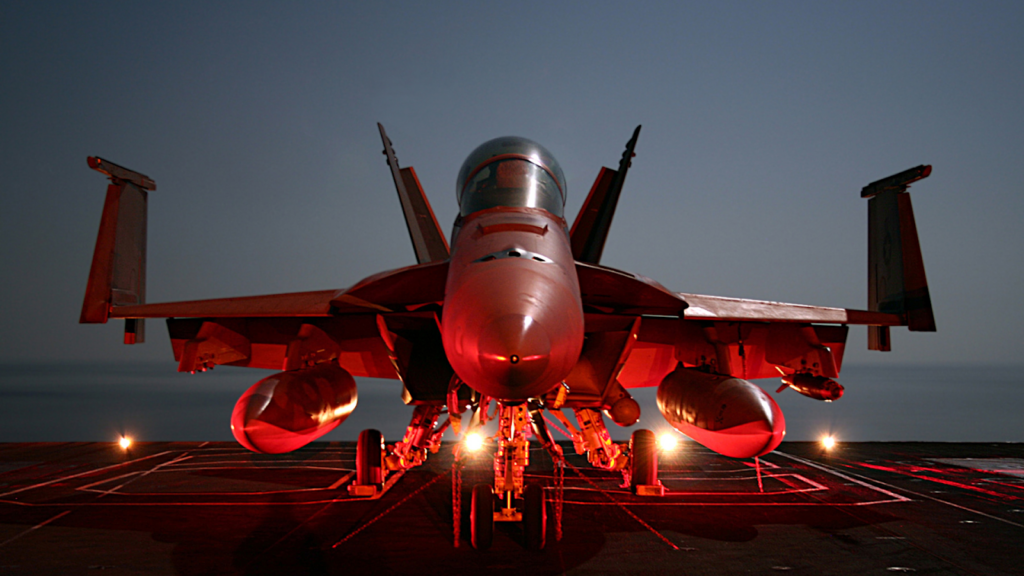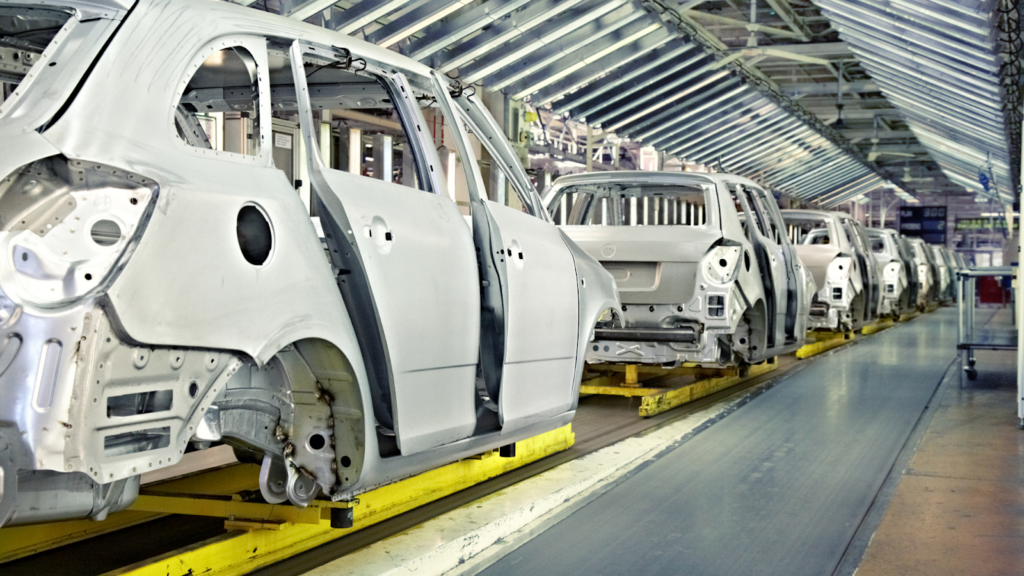MIL-PRF-85285 is the paramount benchmark within the aerospace industry for surface finishing protocols. It intricately delineates the requisite formulations and application methodologies for coatings, engineered to withstand the exacting conditions inherent to aviation and space exploration. Renowned for its rigorous specifications and unwavering dedication to excellence, this standard epitomizes the confluence of cutting-edge innovation and steadfast reliability in aerospace engineering.
In this piece, we will discuss in detail about MIL-PRF-85285 and explore its significance in the aerospace and defense sectors. Companies looking for superior surface finishing solutions can make informed decisions by understanding the specifications and requirements outlined in this standard.
As the world’s largest independent aerospace surface finishing company, Valence Surface Technologies is proud to offer a comprehensive solution encompassing all aspects of the finishing process. With our commitment to excellence and dedication to being the most trusted partner in aerospace surface finishing, Valence ensures that every product meets the stringent MIL-PRF-85285 standards.
Understanding MIL-PRF-85285
MIL-PRF-85285 is a vital benchmark for aerospace coatings, dictating stringent criteria to ensure durability, corrosion resistance, and quality in aerospace and defense applications. Covering a spectrum of coating types such as primers and topcoats, formulations are designed to withstand the extreme conditions inherent in aerospace operations, including temperature fluctuations and exposure to harsh chemicals. Compliance with MIL-PRF-85285 assures manufacturers that their coatings offer the requisite protection for critical aerospace components.
An essential feature of MIL-PRF-85285 is its rigorous performance testing, evaluating properties like adhesion, flexibility, and impact resistance. This testing ensures coatings can endure the demanding aerospace environment and maintain reliability over time. Additionally, the standard outlines specifications for application methods and surface preparation, guiding manufacturers to apply coatings correctly, thus enhancing the longevity and effectiveness of aerospace components.
Science Behind MIL-PRF-85285: Formulation And Performance Insights
Formulation Insights
One key aspect of the formulation is advanced polyurethane resin technology. This technology provides exceptional adhesion to various substrates, including aluminum, steel, and composite materials commonly used in aerospace and defense applications. The polyurethane resin also enhances the coating’s resistance to corrosion, abrasion, and harsh environmental conditions, ensuring long-lasting protection for critical components.
In addition, MIL-PRF-85285 formulations often incorporate special additives to improve performance characteristics further. These additives can enhance flexibility, impact resistance, and color retention, making the coating suitable for various applications in demanding environments.
Performance Insights
MIL-PRF-85285 coatings stand out in aerospace and defense applications for their unmatched performance. They provide unparalleled protection against corrosive agents, hydraulic fluids, fuels, and other chemicals common in aircraft and military equipment, ensuring critical components remain functional even in harsh conditions. These coatings demonstrate exceptional weather resistance, with high UV radiation, extreme temperature, and moisture resistance, maintaining integrity and functionality in outdoor environments.
Additionally, MIL-PRF-85285 coatings offer extended service life for coated parts, reducing maintenance costs and downtime. Their abrasion resistance and flexible nature enable them to withstand mechanical stresses without cracking or delamination, further enhancing durability and overall performance.
Benefits Of MIL-PRF-85285 Coatings In Military Aircraft Maintenance
MIL-PRF-85285 is a specification for polyurethane topcoats used in military aircraft maintenance. There are several benefits to using coatings that meet this specification:
Corrosion and Chemical Resistance
MIL-PRF-85285 coatings provide exceptional protection against corrosion and chemicals, crucial for military aircraft enduring harsh operational environments. By safeguarding against corrosion and chemical damage, these coatings extend aircraft service life and reduce maintenance needs.
Durability
These coatings exhibit remarkable durability, enduring the challenges of military operations including extreme temperatures, high velocities, and abrasive materials. Their robustness minimizes the requirement for frequent maintenance, thereby saving time and costs for military aircraft operators.
Aesthetic Appeal
Beyond their protective properties, MIL-PRF-85285 coatings also enhance the aesthetic appeal of military aircraft. These coatings are available in a wide range of colors and finishes, allowing for customization based on the specific requirements or preferences of the military branch. By maintaining a visually appealing exterior, MIL-PRF-85285 coatings contribute to military aircraft fleets’ overall professionalism and prestige.
Critical Requirements Of MIL-PRF-85285 For Polyurethane Coatings
Military Specification MIL-PRF-85285 is a critical standard for polyurethane coatings used in aerospace and defense applications. Meeting the requirements of this specification ensures that the coatings provide the necessary protection and performance in challenging environments.
Here are some key requirements outlined in MIL-PRF-85285 that must be met for polyurethane coatings:
Chemical Composition: The coating must be a two-component system consisting of a polyurethane resin and a polyisocyanate curing agent. The chemical composition must meet specific adhesion, flexibility, and durability criteria.
Performance Properties: The coating must resist chemicals, weathering, abrasion, and impact. It should maintain its physical properties over various temperatures and environmental conditions.
Application Process: MIL-PRF-85285 specifies the application methods, including surface preparation, mixing ratios, curing times, and film thickness. Proper application is crucial to achieving the desired performance characteristics.
Testing Requirements: The coating must undergo various tests to validate its performance, such as adhesion, flexibility, hardness, and corrosion resistance. These tests ensure that the coating meets the stringent quality standards outlined in the specification.
Color and Finish: MIL-PRF-85285 defines the acceptable color range and finish for polyurethane coatings used in military applications. The coatings must adhere to these requirements to maintain uniformity and aesthetics.
By adhering to the strict guidelines of MIL-PRF-85285, manufacturers can ensure that their polyurethane coatings meet the highest standards for quality, performance, and durability in aerospace and defense applications.
Compliance And Quality Assurance: Meeting MIL-PRF-85285 Standards
Compliance with MIL-PRF-85285 standards involves rigorous quality assurance measures to ensure that coatings meet the specified requirements for use in military applications. Here are some key aspects of compliance and quality assurance:
Material Testing
Manufacturers must conduct extensive testing on raw materials to ensure they meet the required specifications outlined in MIL-PRF-85285. This includes testing for viscosity, adhesion, flexibility, chemical resistance, and weather ability.
Formulation Development
Coating formulations must be carefully developed to achieve the desired performance characteristics while meeting the requirements of MIL-PRF-85285. This may involve adjusting the composition of the coating to optimize properties such as durability and color retention.
Process Control
Strict process controls are implemented throughout the manufacturing process to ensure consistency and uniformity of the coatings. This includes monitoring factors such as temperature, humidity, and mixing procedures to prevent variations in quality.
Quality Control Testing
Finished coatings undergo comprehensive quality control testing to verify that they meet all the requirements specified in MIL-PRF-85285. This may involve a range of tests such as adhesion tests, gloss measurements, salt spray testing, and exposure to various chemicals and environmental conditions.
Applications Of MIL-PRF-85285 Beyond Military: Aerospace And Automotive Industries
MIL-PRF-85285, a military-grade polyurethane coating, finds versatile applications beyond military usage in industries like aerospace and automotive, where demanding environments call for exceptional protection and performance.
Aerospace Industry
MIL-PRF-85285’s flexibility and adhesion properties make it ideal for aerospace applications where parts undergo thermal expansion and contraction. Its ability to adhere to various substrates, including metals and composites, ensures a reliable protective barrier across various aircraft components.
Automotive Industry
The coating’s resistance to oils, fuels, and hydraulic fluids makes it well-suited for applications in engine compartments, underbodies, and chassis components, providing extended longevity and protection against corrosion.
MIL-PRF-85285’s scratch and impact resistance also makes it an ideal choice for automotive coatings, ensuring a long-lasting and aesthetically pleasing finish. Whether applied to exterior body panels or interior trim components, the coating’s ability to withstand harsh conditions and maintain its appearance makes it a valuable asset in automotive manufacturing.
Future Trends And Innovations In MIL-PRF-85285 Aerospace Coatings
As aircraft and defense systems become more complex and demanding, the need for coatings that offer superior protection, durability, and performance only becomes more critical.
One of the prominent trends in MIL-PRF-85285 aerospace coatings is the development of eco-friendly and sustainable formulations. With increasing environmental regulations and a global focus on reducing carbon footprint, aerospace companies are exploring coatings that are not only high-performing but also environmentally responsible.
Advancements in nanotechnology are also shaping the future of aerospace coatings. Nano-coatings offer enhanced properties such as improved durability, corrosion resistance, and self-healing capabilities. These coatings can provide protection to critical components, extending their lifespan and reducing maintenance costs.
Another key trend is the integration of smart coatings in aerospace applications. Smart coatings can sense and respond to external stimuli such as temperature changes, structural damage, or chemical exposure. By incorporating smart coatings into aircraft surfaces, operators can monitor the health of the aircraft in real time, leading to proactive maintenance and improved safety.
Would you like to explore more related topics? Check out these additional articles for further insights.
Frequently Asked Questions on MIL-PRF-85285
How thick is the MIL-PRF-85285 coating?
The typical thickness of a MIL-PRF-85285 coating is between 1.2 to 1.8 mils (30-45 microns) when dry. This can vary slightly depending on application methods and specific requirements of a project.
Is MIL-PRF-85285 type I or IV Class H?
MIL-PRF-85285 defines polyurethane coatings that can be available in different types and classes. Type I is solvent-based, while Type IV is water-dispersible. Class H is not directly specified under this specification, as the designation usually refers to hardness or flexibility under different specs. It’s important to consult the specification or an expert for precise requirements.
What is the mix ratio for MIL-PRF-85285?
The mix ratio for MIL-PRF-85285 coating typically depends on the type and the specific product formulation. Type I, the solvent-based polyurethane, commonly has a mix ratio of 3 parts base to one part catalyst by volume. However, always refer to the manufacturer’s datasheet for accurate mixing instructions.
Can MIL-PRF-85285 coatings be customized for specific applications or color requirements?
Yes, MIL-PRF-85285 coatings can be customized for specific applications and color requirements. While MIL-PRF-85285 specifies the performance criteria and basic chemical composition of the coatings, manufacturers can tailor both the hue and the formulation to meet specific needs, including UV resistance, elasticity, and more.
How do MIL-PRF-85285 coatings compare to other types of aircraft coatings?
MIL-PRF-85285 coatings offer superior durability, weather resistance, and chemical resistance compared to other aircraft coatings. They are designed to withstand the rigorous conditions of aerospace environments, providing excellent adhesion, hardness, and flexibility. Unlike epoxy-based coatings, MIL-PRF-85285 polyurethane coatings offer better color and gloss retention.
What are aircraft’s typical service life and maintenance requirements coated with MIL-PRF-85285?
Aircraft coated with MIL-PRF-85285 can typically expect a service life of 10 to 15 years, depending on operating conditions and adherence to maintenance protocols. Maintenance generally requires regular inspections for damage, cleaning with compatible agents, and touch-ups or recoating as necessary to maintain protective qualities and appearance.
Can MIL-PRF-85285 coatings be recoated or repaired if damaged?
Yes, MIL-PRF-85285 coatings can be recoated or repaired if damaged. It’s essential to properly prepare the surface by cleaning and removing any loose or damaged coating. Using the same type of coating for repairs ensures compatibility and maintains the integrity of the protective layer.
What role do MIL-PRF-85285 coatings play in aircraft weight and fuel efficiency?
MIL-PRF-85285 coatings contribute positively to aircraft weight and fuel efficiency by protecting without excessively thick layers. Their durability and resistance to environmental factors mean that airframes can maintain optimal aerodynamics with minimal weight increase, thereby supporting more fuel-efficient flight operations.

